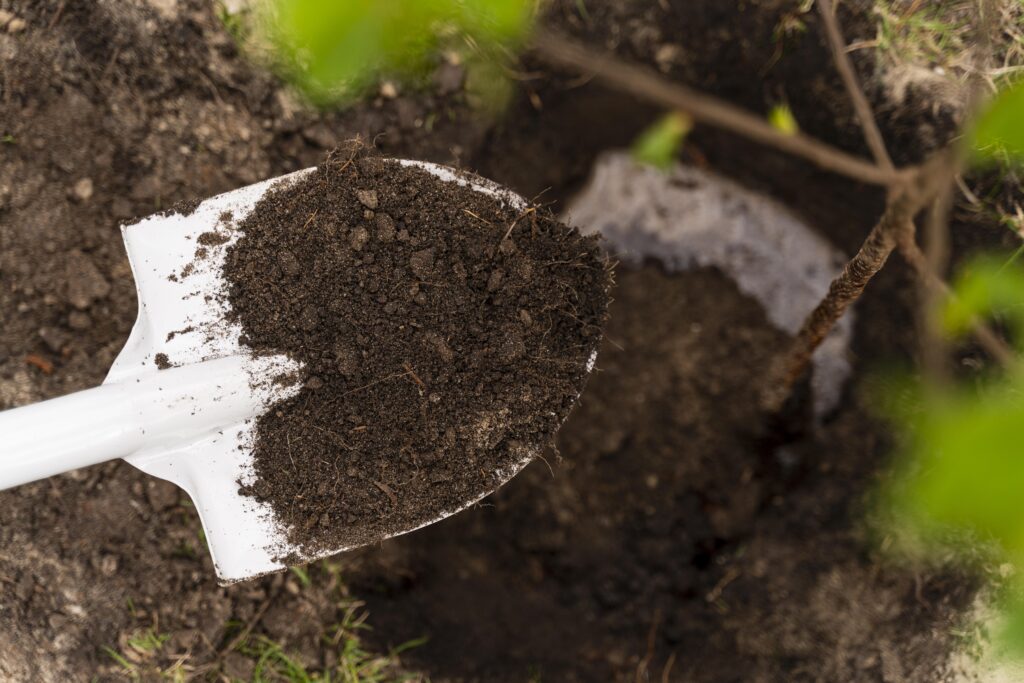Calcium (Ca) Nutrient Deficiencies: Causes, Symptoms, and Solutions for Your Plants
Table of Contents
Causes of Calcium (Ca) Nutrient Deficiencies in Plants
Calcium (Ca) is an essential nutrient for plants, playing a crucial role in various physiological processes. However, calcium deficiencies can occur in plants, leading to detrimental effects on their growth and development. Understanding the causes of calcium nutrient deficiencies in plants is important in order to effectively address and prevent such issues.
One of the primary causes of calcium nutrient deficiencies in plants is a lack of calcium in the soil. Soils with low calcium levels, particularly sandy or acidic soils, may not provide an adequate supply of this essential nutrient to plants. Additionally, soils that are high in potassium or magnesium can interfere with calcium uptake by plants, leading to deficiencies. Furthermore, excessive amounts of other nutrients, such as ammonium nitrogen, can also inhibit calcium uptake. It is important to maintain a balanced nutrient profile in the soil to ensure sufficient calcium availability for plants.

Another factor that can contribute to calcium deficiencies in plants is improper watering practices. Overwatering can result in poor root development and compromised nutrient uptake, including calcium. Conversely, underwatering can lead to drought stress and reduced nutrient absorption. Both extremes can negatively impact the plant’s ability to take up calcium efficiently. Additionally, excessive humidity and poor air circulation can inhibit calcium absorption by plants, further exacerbating deficiencies.
In conclusion, calcium nutrient deficiencies in plants can be caused by inadequate calcium levels in the soil and imbalances in other nutrients. Improper watering practices, including overwatering and underwatering, can also contribute to calcium deficiencies. By understanding these causes, gardeners and plant enthusiasts can take proactive measures to address and prevent calcium nutrient deficiencies in plants, promoting healthy growth and overall plant vitality.
Symptoms of Calcium (Ca) Nutrient Deficiencies in Plants
Plants require an adequate supply of calcium (Ca) in order to maintain their overall health and development. When plants experience a calcium nutrient deficiency, certain symptoms may become evident. One common symptom is the appearance of necrotic lesions on the fruits or leaves. These lesions often start as small, dark spots and gradually expand, eventually leading to tissue death. Additionally, plants suffering from calcium deficiency may exhibit stunted growth, as the lack of calcium hinders cell division and elongation. This can result in plants with shortened stems or dwarfed stature.
Another noticeable symptom of calcium deficiency is the deformity of plant structures. Plants lacking sufficient calcium may have twisted or distorted leaves, stems, or roots. This can negatively impact the plant’s ability to absorb water and nutrients, further compromising its overall health. In some cases, calcium-deficient plants may also display a decline in their ability to withstand stress, making them more susceptible to diseases, pests, and adverse environmental conditions. Understanding and identifying these symptoms is crucial for prompt intervention and correction of calcium deficiencies in plants, promoting their growth and productivity.

The Importance of Calcium (Ca) for Plant Health
Calcium (Ca) is an essential nutrient for plant health, playing a critical role in various physiological processes. It is involved in cell division, cell elongation, and cell wall formation, ensuring the structural integrity and strength of plant tissues. In addition, calcium is vital for enzyme activation and hormone regulation, facilitating the proper functioning of numerous metabolic pathways within plants.
Furthermore, calcium is crucial for the regulation of water movement within plants. It helps in maintaining the balance of water between the cells and the external environment, preventing wilting and dehydration. Calcium also assists in the uptake and assimilation of other nutrients, such as nitrogen, phosphorus, and potassium. It promotes the efficient transportation of these essential elements throughout the plant, ensuring optimal growth and development.
In conclusion, the importance of calcium for plant health cannot be overstated. It serves as a foundational element that supports plant structure, metabolism, and nutrient absorption. By incorporating calcium-rich fertilizers or supplements and maintaining appropriate soil pH levels, gardeners and agricultural practitioners can ensure that their plants receive adequate calcium for optimal growth and productivity.
Common Sources of Calcium (Ca) for Plants
Calcium (Ca) is an essential nutrient for plants, playing a crucial role in various physiological processes and ensuring their proper growth and development. Plants obtain calcium from various sources, both natural and artificial, which provide them with the required amount of this important mineral.
One of the common sources of calcium for plants is soil. Calcium is naturally present in soil minerals and rocks, which gradually weather and release calcium ions into the soil solution. However, the availability of calcium in the soil for plant uptake can vary depending on factors such as soil pH, organic matter content, and clay mineral composition. Additionally, some types of soils, such as sandy soils, may have a lower calcium content, necessitating the need for supplementation.
Another source of calcium for plants is organic matter. Decomposing organic materials, such as compost and manure, release calcium ions into the soil as they break down. These organic sources not only contribute to the calcium content of the soil but also improve its overall fertility and nutrient-holding capacity.
Furthermore, calcium supplements and fertilizers can be utilized to ensure an adequate supply of calcium for plants. These supplements come in various forms such as limestone, gypsum, calcium nitrate, and calcium chloride. They can be applied to the soil or foliar sprayed, depending on the specific plant requirements. The use of calcium-enriched fertilizers can be especially beneficial in cases where the soil lacks sufficient calcium to support optimal plant growth.
Incorporating these common sources of calcium into plant care practices can help ensure that plants receive the necessary amount of calcium for their well-being. By addressing calcium deficiencies, gardeners and plant enthusiasts can promote healthy plant growth, improve crop yields, and enhance overall plant health.
Factors Affecting Calcium (Ca) Uptake in Plants
Factors Affecting Calcium (Ca) Uptake in Plants
Calcium uptake in plants is influenced by various factors that play a crucial role in determining the availability and absorption of this essential nutrient. One of the primary factors affecting calcium uptake is soil pH. Acidic soils with a pH lower than 6.0 can hinder calcium absorption by plants, as high levels of hydrogen ions can displace calcium ions from the soil particles, making it less available for plants to take up. On the other hand, alkaline soils with a pH higher than 7.5 can cause calcium to become less soluble, limiting its uptake by plant roots.
Soil moisture levels also greatly impact calcium uptake in plants. Insufficient soil moisture can impede the movement of calcium through the plant’s root system, reducing its uptake and translocation to the different parts of the plant. Conversely, excessive soil moisture can lead to waterlogged conditions, which can limit oxygen availability in the root zone and hinder calcium uptake. It is therefore crucial to maintain optimal soil moisture levels to ensure proper calcium uptake and distribution within the plant.
Apart from soil pH and moisture, other factors such as soil compaction, nutrient imbalances, and root diseases can also affect calcium uptake in plants. Compacted soils can restrict root growth and penetration, reducing the plant’s ability to access calcium-rich soil layers. Imbalances in other nutrients, particularly high levels of magnesium, potassium, or ammonium, can interfere with calcium uptake and create antagonistic relationships that hinder its absorption. Additionally, various root diseases and disorders, such as root rot or nematode infestations, can damage the root system and impair the plant’s ability to take up calcium effectively.
Understanding the factors that influence calcium uptake in plants is crucial for gardeners and farmers alike. By addressing these factors and creating optimal growing conditions, we can ensure that plants have sufficient access to this vital nutrient, promoting healthy growth and development.

How to Identify Calcium (Ca) Deficiencies in Plants
When it comes to identifying calcium deficiencies in plants, there are several key symptoms to watch out for. One of the most noticeable signs is the appearance of stunted or distorted growth. In particular, the tips of young leaves may become distorted, causing curling or cupping. Additionally, plants suffering from calcium deficiencies often exhibit leaf yellowing or necrosis, where the tissue starts to die and turn brown or black. Another common symptom is the occurrence of blossom end rot in fruits, where the blossom end becomes sunken, dark, and develops a leathery texture.
In some cases, plants may also display a condition known as tip burn, whereby the edges of the leaves turn brown or black. It is important to note that these symptoms can vary depending on the plant species, so it is crucial to familiarize yourself with the specific signs related to the plants you are cultivating. By closely monitoring your plants and recognizing these indicators, you can take proactive steps to address calcium deficiencies before they further impact your plant’s health and productivity.
Effects of Calcium (Ca) Deficiencies on Plant Growth and Development
Plant growth and development rely heavily on the presence of essential nutrients, including calcium (Ca). Calcium deficiencies can have detrimental effects on plants, impacting their overall health and productivity.
One of the primary consequences of calcium deficiencies in plants is the impaired cell wall formation and maintenance. Calcium plays a crucial role in the structural integrity of plant cell walls, contributing to their strength and stability. Without sufficient calcium, cell walls become weak and brittle, leading to reduced structural support for the plant. This can result in stunted growth, decreased plant vigor, and an increased vulnerability to various biotic and abiotic stresses. Additionally, calcium deficiencies can hinder the proper functioning of cell membranes, affecting important physiological processes such as nutrient uptake and transportation within the plant.
| Aspect of Plant Growth | Effects of Calcium Deficiency |
|---|---|
| Cell Wall Structure | Weakens cell walls, leading to poor structural integrity and increased susceptibility to diseases. |
| Cell Division | Impairs cell division, resulting in stunted growth and reduced overall plant size. |
| Root Development | Inhibits root growth and development, affecting the plant’s ability to uptake water and nutrients. |
| Leaf Deformation | Causes distorted or necrotic leaf margins, leading to reduced photosynthesis and overall decreased plant vigor. |
| Fruit Quality | Affects the quality of fruits, leading to issues such as blossom end rot in tomatoes and other calcium-sensitive crops. |
| Nutrient Uptake | Interferes with the uptake of other essential nutrients, impacting overall plant nutrition. |
| Cellular Processes | Disrupts various cellular processes, including enzyme activity, affecting overall plant metabolism. |
| Seed Formation | Compromises seed development, leading to poor seed quality and reduced germination rates. |
| Stress Tolerance | Reduces the plant’s ability to tolerate environmental stresses, such as drought and salinity. |
Furthermore, calcium deficiencies can disrupt vital regulatory processes in plant physiology. Calcium is involved in regulating enzymatic activities and various biochemical reactions within plant cells. It is a secondary messenger in signal transduction pathways, modulating processes such as hormone signaling, stress responses, and gene expression. When plants lack an adequate supply of calcium, these regulatory mechanisms can be compromised, leading to suboptimal growth and development. As a result, plants may exhibit symptoms such as leaf curling, leaf tip necrosis, distorted growth patterns, and reduced fruit quality and yield.
Overall, the effects of calcium deficiencies on plant growth and development are multifaceted and can have profound implications for plant health and productivity. Understanding these effects is crucial for gardeners and agriculturists to implement appropriate measures to combat calcium deficiencies and promote optimal plant growth.
How to Prevent Calcium (Ca) Nutrient Deficiencies in Plants
To prevent calcium nutrient deficiencies in plants, it is crucial to ensure that there is an adequate supply of calcium in the soil. Incorporating organic matter, such as compost or well-rotted manure, into the soil can help improve its calcium content. Additionally, using calcium-rich fertilizers or amendments can provide plants with the necessary nutrients.
Maintaining proper soil pH is also essential for preventing calcium deficiencies. High or low pH levels can interfere with calcium uptake by plants. Conducting regular soil tests and adjusting the pH as needed can help create optimal conditions for calcium absorption.
Furthermore, it is important to avoid excessive use of certain nutrients, such as potassium and ammonium, as they can hinder calcium uptake. Balancing the nutrient ratio in the soil through regular soil testing and appropriate fertilization practices can help prevent imbalances that lead to calcium deficiencies.
In conclusion, preventing calcium nutrient deficiencies in plants involves ensuring a sufficient supply of calcium in the soil, maintaining appropriate soil pH levels, and avoiding nutrient imbalances. Taking these measures will help promote optimal plant health and growth, ultimately leading to higher yield and quality in gardening and agricultural practices.
The Role of Calcium (Ca) in Maintaining Plant Cell Structure
Calcium (Ca) plays a crucial role in maintaining the structural integrity of plant cells. As a secondary macronutrient, it is essential for a wide range of physiological processes and biochemical reactions within plants. One of the key functions of calcium in plant cell structure is its participation in the formation and stability of the cell wall.
The cell wall acts as a protective barrier, providing structural support and rigidity to plant cells. Calcium ions are required for the cross-linking of pectin molecules, a major component of the cell wall. It forms calcium pectate bridges, linking adjacent pectin chains and contributing to the overall strength and cohesion of the cell wall matrix. This cross-linking process helps to maintain the proper shape and structure of plant cells, enabling them to withstand mechanical stresses and environmental pressures.
Furthermore, calcium also regulates the movement of other ions across the cell membrane. It acts as a signaling molecule, participating in cellular processes such as cell division, growth, and development. In addition, calcium ions help to maintain the selective permeability of the plasma membrane, ensuring the proper exchange of nutrients and metabolic products between the cell and its surroundings.
Overall, the role of calcium in maintaining plant cell structure is vital for the optimal functioning and health of plants. Understanding the importance of calcium in structural integrity can help gardeners and agricultural professionals take appropriate measures to prevent or rectify calcium deficiencies, ensuring the overall well-being and productivity of plants.
Signs of Calcium (Ca) Deficiencies in Different Plant Species
Signs of Calcium (Ca) Deficiencies in Different Plant Species
Calcium (Ca) deficiency in plants can manifest in various ways, and the signs of this nutrient deficiency can vary across different plant species. However, there are some common symptoms that can help gardeners identify when their plants are lacking sufficient calcium.
| Plant Species | Signs of Calcium Deficiency |
|---|---|
| Tomato | Blossom-end rot (dark, leathery patches on the bottom of fruits), stunted growth, distorted leaves. |
| Apple | Bitter pit (small, dark spots on the fruit surface), increased susceptibility to diseases. |
| Lettuce | Tip burn (brown, necrotic edges on leaves), poor head development. |
| Cabbage | Leaf tip dieback, distorted growth, increased vulnerability to diseases. |
| Pepper | Blossom-end rot, leaf curling, reduced fruit set. |
| Carrot | Cracked or distorted roots, stunted growth. |
| Potato | Internal brown spots, increased susceptibility to diseases. |
| Grapes | Blossom-end necrosis, reduced fruit quality. |
In general, one of the most prominent signs of calcium deficiency is the development of necrotic tissue or tissue that dies off. This can occur in different parts of the plant, such as the tips of leaves, the edges of petals, or the growing points. The affected areas may turn brown, develop necrotic spots, or exhibit desiccation. Additionally, plants lacking adequate calcium may also show signs of stunted growth, as calcium is essential for cell division and elongation. The overall vigor and vitality of the plant may be compromised, leading to reduced yields in crops or diminished aesthetic value in ornamental plants.
Methods for Treating Calcium (Ca) Nutrient Deficiencies in Plants
When it comes to treating calcium nutrient deficiencies in plants, there are a few effective methods that gardeners can employ. The first and most commonly used method is to provide plants with calcium-rich fertilizers or soil amendments. These can be in the form of organic materials, such as bone meal or crushed eggshells, or synthetic fertilizers specifically formulated to supply plants with calcium. By incorporating these materials into the soil or applying them as a top dressing, gardeners can help ensure that plants have access to an adequate supply of calcium.
In addition to fertilizers, foliar sprays can also be used to treat calcium deficiencies in plants. Foliar sprays are liquid solutions that are applied directly to the leaves of plants, allowing for quick absorption of the nutrients. In the case of calcium deficiencies, specific calcium-based foliar sprays can be used to provide an immediate source of this essential nutrient. It’s important to note, however, that foliar sprays should be used in conjunction with other methods of treatment, as they are not a long-term solution and should be used as a supplement to correct deficiencies in the short term.
Calcium (Ca) Deficiencies in Hydroponic Systems: Causes and Solutions
Calcium (Ca) deficiencies in hydroponic systems can be problematic and detrimental to the growth and development of plants. In hydroponic setups, where plants are grown in a nutrient-rich water solution instead of soil, the availability and uptake of calcium become critical factors. Several causes can contribute to calcium deficiencies in hydroponic systems.
Firstly, inadequate calcium levels in the nutrient solution can occur when the solution is not properly balanced or when the calcium concentration is insufficient. This can happen if the nutrient solution is mixed incorrectly or if the calcium source used is of low quality or purity. It is crucial to ensure that the calcium concentration in the nutrient solution is within the appropriate range for the specific plant species being cultivated.
Another potential cause of calcium deficiencies in hydroponics is poor nutrient uptake by the roots. Factors such as suboptimal pH levels, high concentrations of other nutrients or minerals, or imbalances in nutrient ratios can hinder the plant’s ability to absorb calcium effectively. Additionally, environmental factors such as temperature fluctuations, humidity levels, and light intensity can also influence calcium uptake in hydroponic systems.
Finding solutions to address calcium deficiencies in hydroponic systems is essential to maintain the health and productivity of plants. One approach is to adjust the nutrient solution by increasing the calcium concentration to meet the specific plant’s requirements. Precise monitoring of nutrient solution pH levels is also crucial, as fluctuations can impact calcium availability. In instances where poor uptake is the issue, ensuring proper nutrient balance and ratio adjustments can help improve calcium absorption. Additionally, maintaining stable environmental conditions within the hydroponic setup can promote optimal calcium uptake by the plants.
The Relationship between Calcium (Ca) and Other Nutrients in Plant Nutrition
Calcium plays a crucial role in the overall nutrition and health of plants. It not only strengthens cell walls but also aids in nutrient uptake and transportation within the plant. However, the relationship between calcium and other nutrients in plant nutrition is equally important. The availability and absorption of calcium can be influenced by the presence or absence of certain nutrients in the soil.
One vital nutrient that interacts with calcium is potassium. Adequate levels of potassium enhance calcium uptake by plants, while potassium deficiencies can hinder calcium absorption. The balance between these two nutrients is essential for optimal plant growth and development. Additionally, magnesium, another essential element, also impacts calcium availability. Magnesium deficiency can interfere with the proper utilization of calcium, leading to potential deficiencies.
Moreover, the relationship between calcium and other plant nutrients extends beyond just absorption. For instance, calcium interacts with phosphorus in the soil, forming insoluble compounds that reduce phosphorus availability to plants. On the other hand, excessive levels of calcium can hinder the uptake of other micronutrients, such as iron and manganese. Therefore, maintaining a well-balanced nutrient profile and ensuring that calcium is present in appropriate concentrations is crucial for the overall nutrition and vitality of plants.
Calcium (Ca) Supplements and Fertilizers: Types and Application Techniques
Calcium (Ca) supplements and fertilizers are essential for maintaining optimal plant health and preventing calcium deficiencies. There are various types of calcium supplements and fertilizers available, each with its own application technique and benefits.
One common type of calcium supplement is calcium nitrate, which is a highly soluble form of calcium that can be easily taken up by plant roots. It is usually applied as a foliar spray or in irrigation water. Calcium nitrate provides a quick and efficient source of calcium to plants, helping to correct deficiencies and promote healthy growth.
Another type of calcium fertilizer is calcium carbonate, which is derived from limestone or ground oyster shells. This slow-release fertilizer gradually releases calcium into the soil, providing long-term benefits to plants. It is typically applied as a soil amendment or incorporated into potting mixes.
In addition to these supplements, there are also calcium-rich organic fertilizers available, such as bone meal or gypsum. These natural sources of calcium can be beneficial for organic gardening practices and provide a more sustainable approach to calcium supplementation.
When applying calcium supplements and fertilizers, it is important to follow the recommended application rates and methods specified by the manufacturer. Overuse of calcium fertilizers can lead to nutrient imbalances or even toxicity, so it is crucial to apply them judiciously according to the specific needs of the plants.
In the next section, we will delve deeper into the implications of calcium deficiencies in plants and the effects they have on growth and development. Understanding these effects will highlight the importance of utilizing calcium supplements and fertilizers as part of a comprehensive plant nutrition strategy. By implementing appropriate application techniques and utilizing the right types of calcium supplements, gardeners can ensure that their plants have access to this vital nutrient for healthy and vigorous growth.
Calcium (Ca) Nutrient Deficiencies in Crops: Implications for Agricultural Practices
Calcium (Ca) nutrient deficiencies in crops can have significant implications for agricultural practices. As a vital element for plant growth and health, calcium plays a crucial role in maintaining plant cell structure and ensuring proper functioning of various physiological processes. When crops suffer from calcium deficiencies, their overall growth and development can be severely impacted, leading to reduced yield and quality.
One of the main implications of calcium nutrient deficiencies in crops is the increased susceptibility to diseases and disorders. Calcium deficiency weakens plant cell walls, making them more prone to infection by pathogens and less able to withstand environmental stresses. This can result in diseases such as blossom end rot in tomatoes and peppers, bitter pit in apples, and tip burn in lettuce. For agricultural practices, this means increased pest and disease management efforts, as well as potential economic losses due to crop damage.
Moreover, calcium deficiency can also affect the post-harvest quality and shelf life of crops. Calcium is essential for maintaining firmness and texture in fruits and vegetables, preventing post-harvest deterioration and extending their shelf life. Without sufficient calcium, crops may experience softening, wilting, and rotting, making them less marketable and reducing their storage potential. Agricultural practices must therefore focus on proper calcium nutrition to ensure the optimal quality and longevity of harvested crops.
In conclusion, calcium nutrient deficiencies in crops have significant implications for agricultural practices. They can increase disease susceptibility, reduce post-harvest quality, and ultimately impact crop yield and profitability. To mitigate these implications, it is essential for farmers and agricultural professionals to prioritize calcium nutrition and implement appropriate management strategies to ensure optimal crop health and productivity.
What are the causes of calcium nutrient deficiencies in plants?
Calcium nutrient deficiencies in plants can be caused by factors such as low soil calcium levels, acidic soil conditions, imbalanced nutrient ratios, excessive potassium or magnesium levels, and poor root development.
What are the symptoms of calcium nutrient deficiencies in plants?
Plants experiencing calcium nutrient deficiencies may exhibit symptoms such as stunted growth, yellowing of leaves, leaf curling or distortion, blossom end rot in fruits, weakened cell walls, increased susceptibility to diseases, and reduced overall plant health.
Why is calcium important for plant health?
Calcium plays a vital role in maintaining plant cell structure, promoting cell division and elongation, facilitating nutrient uptake and transport, regulating enzyme activities, enhancing disease resistance, and promoting overall plant growth and development.
What are common sources of calcium for plants?
Common sources of calcium for plants include lime, gypsum, dolomite, crushed eggshells, bone meal, and certain organic materials such as compost or manure.
What factors affect calcium uptake in plants?
Factors that can affect calcium uptake in plants include soil pH, soil moisture levels, root health and development, competition with other nutrients, and temperature fluctuations.
How can calcium deficiencies in plants be identified?
Calcium deficiencies in plants can be identified through visual symptoms such as leaf yellowing, leaf curling, blossom end rot, and stunted growth. Soil testing can also help determine the level of calcium present in the soil.
What are the effects of calcium deficiencies on plant growth and development?
Calcium deficiencies can negatively impact plant growth and development, leading to reduced cell division and elongation, weakened cell walls, increased susceptibility to diseases, poor fruit development, and overall poor plant health.
How can calcium nutrient deficiencies in plants be prevented?
Calcium nutrient deficiencies in plants can be prevented by maintaining proper soil pH, ensuring adequate calcium levels in the soil through amendments, practicing balanced fertilization, promoting good root development, and providing optimal growing conditions for the plants.
What is the role of calcium in maintaining plant cell structure?
Calcium plays a crucial role in maintaining plant cell structure by forming cross-links between pectin molecules in the cell walls. This helps strengthen the cell walls and promotes stability and rigidity in the plant tissues.
What are the signs of calcium deficiencies in different plant species?
Different plant species may exhibit varying signs of calcium deficiencies. For example, tomatoes may show blossom end rot, apple trees may exhibit bitter pit in fruits, and lettuce may display tip burn or edge necrosis in leaves.
What methods can be used to treat calcium nutrient deficiencies in plants?
Treating calcium nutrient deficiencies in plants can involve soil amendments with calcium-rich materials, foliar sprays with calcium solutions, or using calcium supplements in hydroponic systems. The specific method depends on the severity of the deficiency and the plant’s needs.
What causes calcium deficiencies in hydroponic systems and how can they be solved?
Calcium deficiencies in hydroponic systems can be caused by factors such as nutrient imbalances, inadequate nutrient solution preparation, pH fluctuations, or poor root health. Solutions may include adjusting nutrient ratios, maintaining proper pH levels, using appropriate calcium supplements, and ensuring optimal root conditions.
How does calcium interact with other nutrients in plant nutrition?
Calcium interacts with other nutrients in plant nutrition by influencing their availability and uptake. It can affect the balance of nutrients like potassium and magnesium and can compete with other cations for uptake by plant roots.
What types of calcium supplements and fertilizers are available for plants, and how should they be applied?
Various types of calcium supplements and fertilizers are available for plants, including calcium carbonate, calcium nitrate, and calcium chelates. These can be applied through soil incorporation, foliar application, or fertigation methods, depending on the specific product and plant requirements.

Pallavi Gupta is a burgeoning writer at SouthElMonteHydroponics, blending her passion for data analysis with a keen interest in biotechnology. Currently pursuing a Bachelor’s in Biotechnology at Amity University, Pallavi delves into the intricacies of life sciences while gaining hands-on experience in the exciting world of data analysis. Her unique background provides a fresh perspective on hydroponic farming, as she explores the intersection of biotechnology and sustainable agriculture. Through her writing, Pallavi aims to bridge the gap between data-driven insights and innovative farming practices, inspiring others to harness technology for a greener future.








One Comment